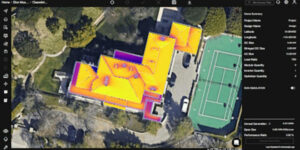
Just like humans and animals, plants need nutrients from soil, water, and air to grow. The composition of the soil directly affects the health of the plant: iron, potassium, calcium, phosphorus, manganese, and many others. If any element is missing, the plant gets sick and may even die. But how do you know what element the plant is lacking? The answer is the plant itself. Each vital nutrient deficiency has its symptoms, which can be detected through monitoring. If identified timely, each of those deficiencies, including nitrogen deficiency, can be treated to prevent it from spreading and to save the plant.
Nitrogen
Nitrogen is one of the most important elements for a plant. It helps to maintain the necessary water balance and also stimulates the growth and development of the plant. A lack of nitrogen in the soil occurs most often in early spring, due to low soil temperatures that prevent the formation of minerals. So, how to identify and fix nitrogen deficiency in plants?
Nitrogen deficiency is manifested in thin and sluggish shoots, small leaves and inflorescences, low branching. In general, the plant does not develop well. In addition, the lack of nitrogen can be indicated by a change in leaf color, in particular the color of the veins, both central and lateral. With nitrogen starvation, the veins first turn yellow, and later turn yellow and the perianth leaf tissue. Also, the coloration of the veins and leaves may become reddish, brown or light green. The signs of nitrogen deficiency first appear on older leaves, eventually taking over the entire plant.
Plant nitrogen deficiency can be mitigated by the application of fertilizers containing nitrate nitrogen (potassium, ammonium, sodium and other nitrate) or ammonium nitrogen (ammophos, ammonium sulfate, urea). A high nitrogen content is present in natural organic fertilizers.
Phosphorus
This element is especially important during flowering and fruit formation. Signs of phosphorus deficiency are difficult to confuse with any other symptoms: leaves and shoots turn bluish in color, the glossiness of the leaf surface is lost. In especially neglected cases the coloring may even turn purple or bronze. Areas of dead tissue appear on lower leaves, then the leaf completely shrivels up and falls off. Young shoots continue to develop, but look weakened.
Phosphorus deficiency is treated with phosphorus fertilizers: rock phosphate, potassium phosphate, superphosphate. A large amount of phosphorus is contained in poultry manure.
Calcium
Calcium is important for proper functioning of plant cells, protein and carbohydrate metabolism. Calcium deficiency primarily affects the root system. Signs of calcium deficiency appear first on young leaves and shoots: brown spotting, curvature, twisting. Later, both already formed and newly emerging shoots die off. Lack of calcium leads to poor absorption of other minerals, and therefore the plant may show signs of potassium, magnesium, or nitrogen deficiency.
Lime fertilizers such as chalk, dolomite limestone, dolomite flour, slaked lime, and many others can help increase the amount of calcium in the soil.
Magnesium
Magnesium is essential for proper photosynthesis. In addition, the mineral is involved in redox processes. When there is a lack of magnesium in the soil, chlorosis occurs on the leaves of the plant. But unlike the signs of iron chlorosis, the lower, older leaves are affected first. The color of the leaf plate between the veins changes to reddish, yellowish. Spots appear all over the leaf, indicating tissue death, the leaf curls and wrinkles on the edges.
To eliminate the lack of magnesium, fertilizers that contain a large amount of the necessary substance are used: dolomite flour, potassium magnesia, magnesium sulfate. Wood ash and ash make up for magnesium deficiency well.
Potassium
Potassium is one of the basic elements of plant mineral nutrition. Its role is enormous: maintaining water balance, increasing plant immunity, increasing resistance to stress, and much more. Lack of potassium leads to leaf burn (deformation and drying of the leaf edges). Brown spots appear on the leaf plate, the veins appear as if pressed into the leaf. Symptoms first appear on older leaves. Often the lack of potassium leads to active leaf loss during flowering. Stems and shoots droop, plant development is slowed: appearance of new buds, sprouts, and fruit stops.
To compensate for the lack of potassium such fertilizers as potassium chloride, potassium magnesia, potassium sulfate, and wood ash are used.
Sulfur
Sulfur levels in soils can change rapidly under the influence of various factors. Soil type and moisture, weather conditions, and the biological characteristics of crops all influence the sulfur availability of plants. Externally, sulfur deficiency is manifested by pale green and yellow coloring of young plant leaves, with chlorosis resembling nitrogen deficiency symptoms. However, nitrogen deficiency first appears on older leaves.
A small need for sulfur can be corrected by foliar feeding with readily soluble forms of fertilizer. If sulfur deficiency is detected at an early stage of plant growth and is timely treated, high yields can be expected. If the first application of nitrogen fertilizer contained a lot of sulfur, it is better to use nitrogen fertilizers without sulfur in the following applications.
- SEO Powered Content & PR Distribution. Get Amplified Today.
- Platoblockchain. Web3 Metaverse Intelligence. Knowledge Amplified. Access Here.
- Source: https://usgreentechnology.com/most-common-nutrient-deficiencies-in-plants-symptoms-and-treatment/
- a
- active
- addition
- AIR
- All
- already
- amount
- and
- animals
- answer
- appear
- Application
- applications
- areas
- availability
- Balance
- basic
- become
- Better
- between
- burn
- cases
- Cells
- central
- change
- Changes
- characteristics
- color
- Common
- completely
- conditions
- content
- continue
- corrected
- crops
- dead
- Death
- detected
- develop
- Development
- Die
- difficult
- directly
- during
- each
- Early
- early stage
- elements
- eliminate
- emerging
- enormous
- Entire
- especially
- essential
- Even
- eventually
- expected
- factors
- Falls
- feeding
- First
- Fix
- following
- formation
- formed
- forms
- from
- functioning
- General
- Green
- Grow
- Growth
- Health
- help
- helps
- High
- How
- However
- HTTPS
- Humans
- identified
- identify
- immunity
- important
- in
- Including
- Increase
- increasing
- influence
- involved
- IT
- itself
- Know
- Lack
- large
- Leads
- levels
- light
- Lime
- Look
- loss
- Lot
- Low
- maintain
- make
- many
- mineral
- minerals
- missing
- monitoring
- more
- most
- Natural
- necessary
- Need
- New
- nutrition
- ONE
- organic
- Other
- Others
- particular
- Photosynthesis
- plants
- plato
- Plato Data Intelligence
- PlatoData
- poor
- Poultry
- present
- prevent
- primarily
- processes
- proper
- Protein
- rapidly
- reddish
- resembling
- Resistance
- Rock
- Role
- root
- Save
- show
- Signs
- sluggish
- small
- So
- Spreading
- spring
- Stage
- stems
- stimulates
- Stops
- stress
- substance
- such
- Surface
- Symptoms
- system
- taking
- The
- therefore
- Through
- to
- treatment
- TURN
- under
- use
- various
- vital
- Water
- Weather
- What
- which
- without
- yields
- young
- zephyrnet









